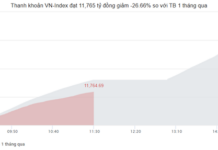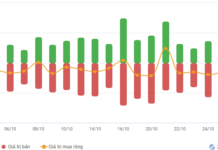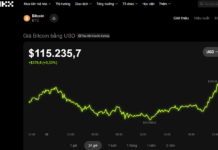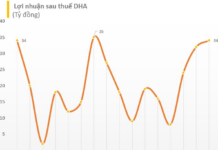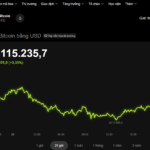
Bitcoin price movements.
The reason behind the surge in Bitcoin’s value is the expectation of an upcoming low interest rate cycle.
Last Friday (March 8), Bitcoin reached a peak of $70,105 as cryptocurrency investors expected global interest rates to fall, especially in the US.
Billions of dollars have poured into ETF funds in recent weeks and the market has received additional support from various prospects, including the upgrade of the Ethereum blockchain, the second-largest cryptocurrency, and Bitcoin “halving” – the event that rewards Bitcoin miners in April.
Even institutional investors, who had previously stayed away from cryptocurrency due to its volatile and wild nature, have started investing in the long term, which analysts believe can help sustain the latest leg of this “protest.”
According to LSEG data, net inflows into the top 10 largest bitcoin ETF funds in the US reached $2.2 billion in the week ending March 1, with over $2 billion of that transferred to BlackRock’s iShares Bitcoin Trust.
The recent optimism towards Bitcoin has also spilled over to other digital tokens, especially Ether, the second-largest cryptocurrency by market capitalization, which has risen over 60% since the beginning of the year.
On Friday, Ether rose 1.62% to $3,939.84. Cryptocurrency stocks also rose on Friday, with Coinbase shares up 8.2% in this session and shares of cryptocurrency mining companies Riot Platforms and Marathon Digital up 5.1% and 9.6% respectively.
There is even discussions in the market about whether Bitcoin can surpass gold in the investment portfolio allocation of investors or not. However, analysts believe that this asset is very unlikely to escape its speculative nature. The fact is that this currency is still highly volatile. But this does not seem to hinder a new wave of investments pouring into cryptocurrencies.
The approval of 11 Bitcoin ETF funds by the US Securities and Exchange Commission (SEC) at the end of January marked a turning point for the industry after an “crypto winter” lasting 18 months due to a series of bankruptcies and scandals involving major cryptocurrency companies.
A “crypto winter” after a boom year in 2021 with a series of bankruptcies and collapses at the largest cryptocurrency companies that caused millions of people to lose money. Many cryptocurrency CEOs have been charged with criminal offenses and regulatory agencies have increased warnings about the risks.
Until now, the risk level in the cryptocurrency market has not diminished. For example, in the past week, after reaching a record high on Tuesday, Bitcoin made a strong reversal and fell more than 10% to below $60,000.
Antoni Trenchev, co-founder of cryptocurrency lending platform Nexo, said, “Navigating famous old high levels is difficult”. “The Bitcoin market is predicted to rise in 2024, but it will also be highly volatile, and there will be multiple sudden price drops of around 10% – 20%,” he said.
With billions of dollars flowing into US Bitcoin ETF funds – launched this year, there are explanations for the Bitcoin surge, but no one knows for sure what the real driving force is.
Crypto enthusiasts believe that this industry has matured, but central banks and regulators are still cautious. Now investors are wondering: how much further can this market grow and will the end of this rally be different from previous ones? And will the investment in Bitcoin quickly surpass the investment in gold?
A team of JPM analysts led by Nikolaos Panigirtzoglou said that for Bitcoin’s allocation to surpass that of gold, the market capitalization of this cryptocurrency will need to rise to $3.3 trillion. They noted that this topic has attracted attention as more investors see Bitcoin as a digital version of gold.
“Most investors take into account the risk and volatility when allocating between asset classes, and with Bitcoin’s volatility about 3.7 times that of gold, it would be unrealistic to expect Bitcoin to be on par with gold in investors’ portfolios with nominal amounts,” they said.
They added that when Bitcoin is compared to gold in terms of “risk capital,” the implied allocation drops to $0.9 trillion. This means that the BTC price is $45,000, significantly lower than the $70,000 Bitcoin reached last Friday.
The analysis team said, “At the current price of $66,000, the implied allocation for Bitcoin in investor portfolios exceeds gold in terms of volatility adjustment.”
They also said that when the volatility ratio of 3.7 is used to estimate the potential scale of the Bitcoin ETF market, it implies a scale of about $62 billion, while noting that net inflows into the Bitcoin ETF funds are currently about $9 billion.
“In our view, this is a realistic target for the potential scale of Bitcoin’s ETF funds over time, perhaps in the range of two to three years, although most of the implied net inflows may reflect continuous changes from existing instruments and venues to ETFs,” the analysts said.
References: Kitco, Reuters

